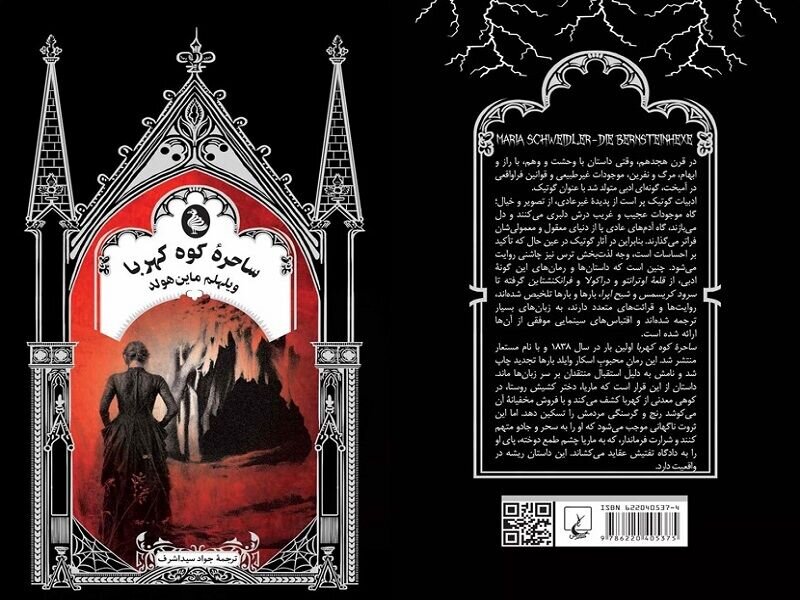Johannes Wilhelm Meinhold’s “The Amber Witch” published in Persian

TEHRAN-The Persian translation of the novel “The Amber Witch” by Johannes Wilhelm Meinhold has been released in bookstores across Iran.
Qoqnoos Publication has brought out the book in 359 pages, which has been translated by Javad Seyed Ashraf, IRNA reported.
The novel was originally published in 1838 as a literary hoax which purported to be an actual 17th-century chronicle. Meinhold later admitted to the hoax but had some difficulty in proving that he was its author.
The story is set during the Thirty Years' War. The purported author, Reverend Abraham Schweidler, almost loses his only child, Maria, to a plot by a rejected suitor, Sheriff Appelmann, who has accused Maria of practicing witchcraft. In this, he was aided by an evil and jealous woman in the neighborhood.
After a trial and under threat of the most dire torture, Maria, wholly innocent of the crime, confesses. While on her way to the stake, she is rescued by a courageous young nobleman who loves her and exposes the evil plot against her.
Johannes Wilhelm Meinhold (1797-1851) was a Pomeranian priest, poet, playwright, and novelist. His best-known works are two historical Gothic romance novels, one of which is “The Amber Witch”.
Meinhold claimed to have discovered a manuscript written by a 17th-century minister, Abraham Schweidler (purportedly a pastor of Coserow and known for his fire and brimstone sermons) amongst the rubbish in the choir of the old Coserow church. The manuscript contained the story of the pastor's daughter Maria, the “Amber Witch”.
The tale was described by Meinhold, in the subtitle of the novel, as “the most interesting trial for witchcraft ever known”. When it first appeared, almost all of the German critics believed it was an authentic historical document. The work attracted critical notice, not only for the dramatic nature of its narrative but also for disputes about which parts of it were original and which were Meinhold's reconstructions, written in imitation of the 17th-century style.
Meinhold's intention was to set a trap for the disciples of David Strauss and his school, who pronounced the Bible to be a collection of legends from historical research assisted by internal evidence.
Only in a later edition did the author admit that the tale was entirely imaginary. His admission that it was a hoax was at first rejected but was soon accepted as the truth.
The hoax was done with great skill and attention to detail, using language that would have been used in 17th-century Germany.
SS/SAB
Leave a Comment